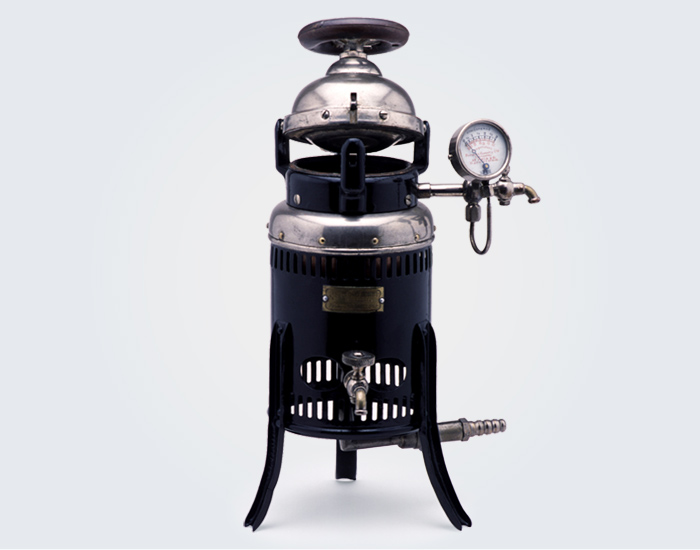
Made by: Pedro Homet, Barcelona
Steel, iron, brass and wood
Early’s XX Century
Registry number: MG 564
Photography: Autoclave a gas
Unknown photographer
© Museo del Gas de la Fundación Gas Natural Fenosa, 2017
Since the last decade of the 19th century, the comfort and convenience provided by manufactured gas has not been limited to only homes and industry, as many business sectors also benefited from the innovations using this energy source. The Gas Natural Fenosa Foundation Gas Museum collection preserves a gas autoclave that shows the progress in the medical sector. It is an invention that served to sterilise sanitary material using water vapour. This item is the smallest of its kind and because of its size, it is believed to have been used to sterilise surgical material, possibly needles and other small sanitary products. The manufacturer of this gas autoclave, Barcelona-based company, Pedro Homet, supports this hypothesis because its catalogue contains other medical products such as antiseptic bandages and surgical material.
In order to sterilise the objects, they were placed inside a metal capsule of the autoclave and once it was full, it was closed and submerged in a container full of water. This capsule had a small tab which enabled two positions: one where you can see several perforations that allowed the vapour to enter, and another where the perforations were covered to maintain the state of sterilisation once the process had finished and it had been taken out of the capsule. The wheel at the top of the autoclave allowed the equipment to be hermetically sealed, thereby creating a vacuum. The gas fed the flame that heated the water and turned it into vapour. As a vacuum was created inside the capsule, the vapour reached a high temperature and generated pressure that was controlled by a gauge. Once the process finished, the valve was opened to allow air in. This broke the vacuum and meant the autoclave could be opened and the sterilised material could be removed.